This post contains affiliate links. Please see our disclosure policy.
Could the benefits of dietary fiber really be that impressive? What if there was a magic pill that could help you manage your weight, increase insulin sensitivity, improve gut and mental health, and reduce your risk of disease across the board, without negative side effects. Would you take it?
If so, then look no further than the roughage found only in plants: Fiber.
Animals have bones to hold them up, but plants—and only plants—have fiber. –– Dr. Michael Greger
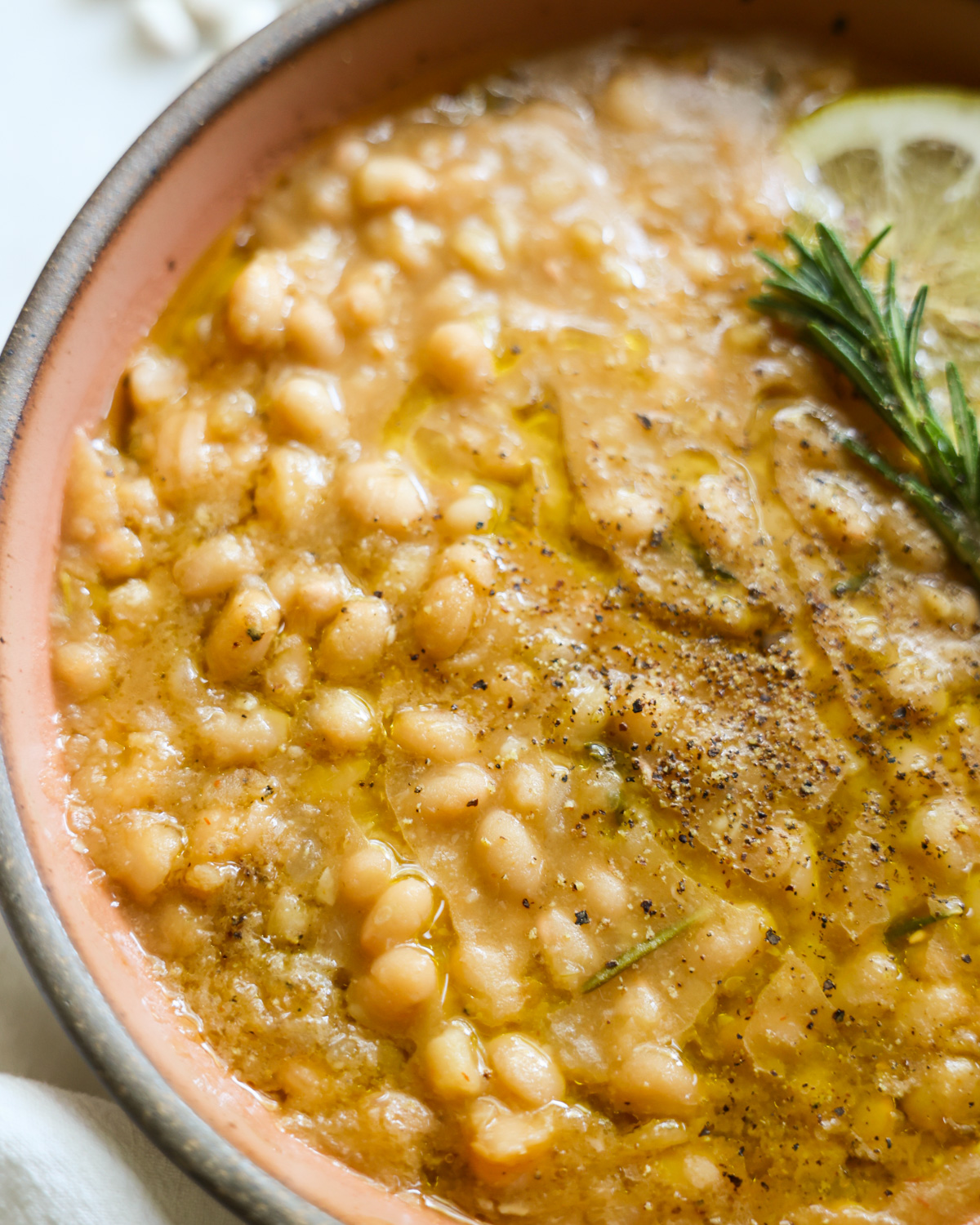
What is Fiber
Fiber is a type of carbohydrate found in plants that the body cannot digest. Unlike other carbohydrates, it does not break down into sugar to be absorbed into the bloodstream and transported to cells for energy. Instead, fiber passes through the intestinal tract. But it isn’t just the bulk of your stool. Fiber is essential for the health of your digestive system, hormone regulation, insulin resistance, gut microbiome, and heart health.
How Much Fiber do you Need Everyday?
Ancient humans consumed at least 100 grams of fiber per day [source]. However, the average American consumes just 15 grams of fiber each day. This is because the Standard American Diet is low in fruits and vegetables, and high in animal products (zero fiber) and ultra processed food (very low, if any, fiber). The current recommended daily intake of fiber is 25-35 grams [source] which is very easy to surpass when eating a diet rich in fruits, vegetables, legumes, whole grains, nuts and seeds. Check out my chart of high fiber foods below. To get the most health benefits of dietary fiber, eat as much fiber as you can.
Adding Fiber To Your Diet
If you’re aspiring to a high fiber diet, slowly increase fiber to allow your system to adjust. Strive for 8-10g per meal and 5g per snack. Once you hit the recommended dietary allowance (RDA) consistently for two weeks, check in with your body’s response. You may need more than the average daily intake if you notice constipation, or you may simply need to increase water intake and movement. Experiment to find what works for you. I’ve included a sample high fiber menu below.
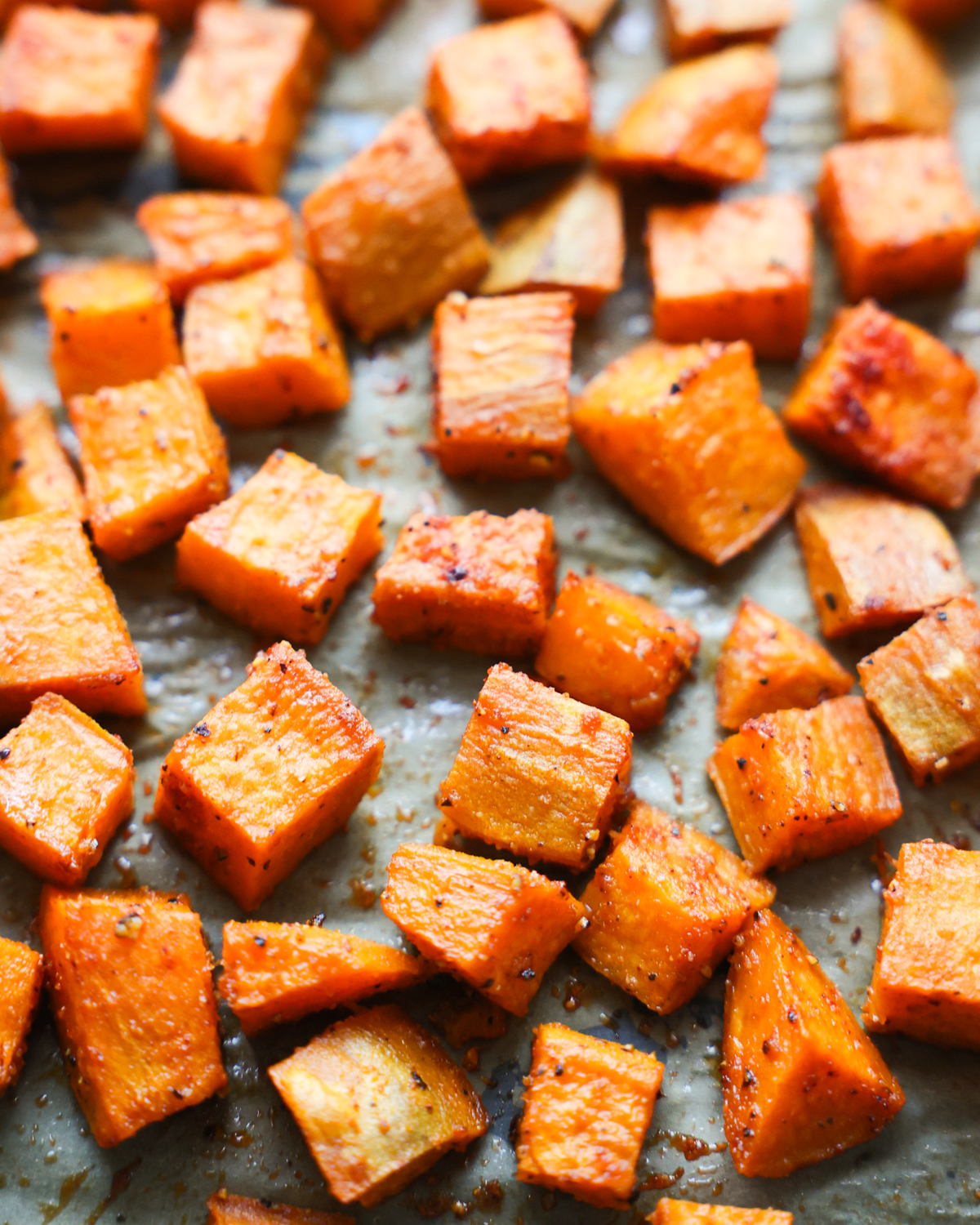
The Benefits of Dietary Fiber
- Weight management without a pill. Fiber makes you feel full quickly, keeps you full for longer, sends a signal to your brain to stop eating, improves digestion and elimination, and supports hormonal function. Fiber does what weight loss pills like Ozempic do, but without potential negative side effects [source].
- Fiber feeds bacteria in our gut. It may sound icky to learn that you have billions of microorganisms living inside your gut, but we wouldn’t be alive without them. The good bacteria in your gut is responsible for myriad health functions including supporting healthy digestion, insulin sensitivity, immune response, and mental health. And fiber is their food. Diets low in fiber lead to more unhealthy bacteria colonizing the gut, which results in increased disease risk [source].
- Improved mental health. Perhaps the most surprising benefit of fiber is its potential to improve mental health. Serotonin, considered the happy hormone, is mostly produced in the gut. A healthy gut microbiome is responsible for higher levels of serotonin, and fiber is needed for a healthy microbiome [source]. Further, since fiber is so essential for overall health, it’s no wonder your mental health would improve if you’re feeling your best.
- Bulk and Broom. Fiber is most famously known for its role in healthy elimination. Soluble fiber provides the “bulk” for your stool, while insoluble fiber acts as the “broom” to sweep your intestines clean every day. Without enough fiber toxins stay in the digestive tract where they can be reabsorbed into the body [source], and cause health issues.
- Better insulin sensitivity. Fiber slows the absorption of sugar from our intestines to our bloodstream, allowing a steady stream of energy to our body. It also causes insulin to secrete from the pancreas at a slower pace, improving insulin sensitivity [source].
- Heart Health. While heart disease is the world’s number one killer, fiber helps to reduce your risk of high blood pressure and high LDL cholesterol. High fiber diets are also marked by healthier weight and lower prevalence of obesity. These factors all contribute to greater heart health [source].
- Reduced risk of colon, reproductive, and other cancers. High fiber foods do indeed come packaged by nature with antioxidants and anti-inflammatory compounds that help reduce risk of cancer. Fiber also helps to remove toxins and excess hormones (like estrogen) from the body. Without adequate fiber and healthy elimination, these toxins and hormones can be reabsorbed into the body and cause serious problems, like cancer. [source]
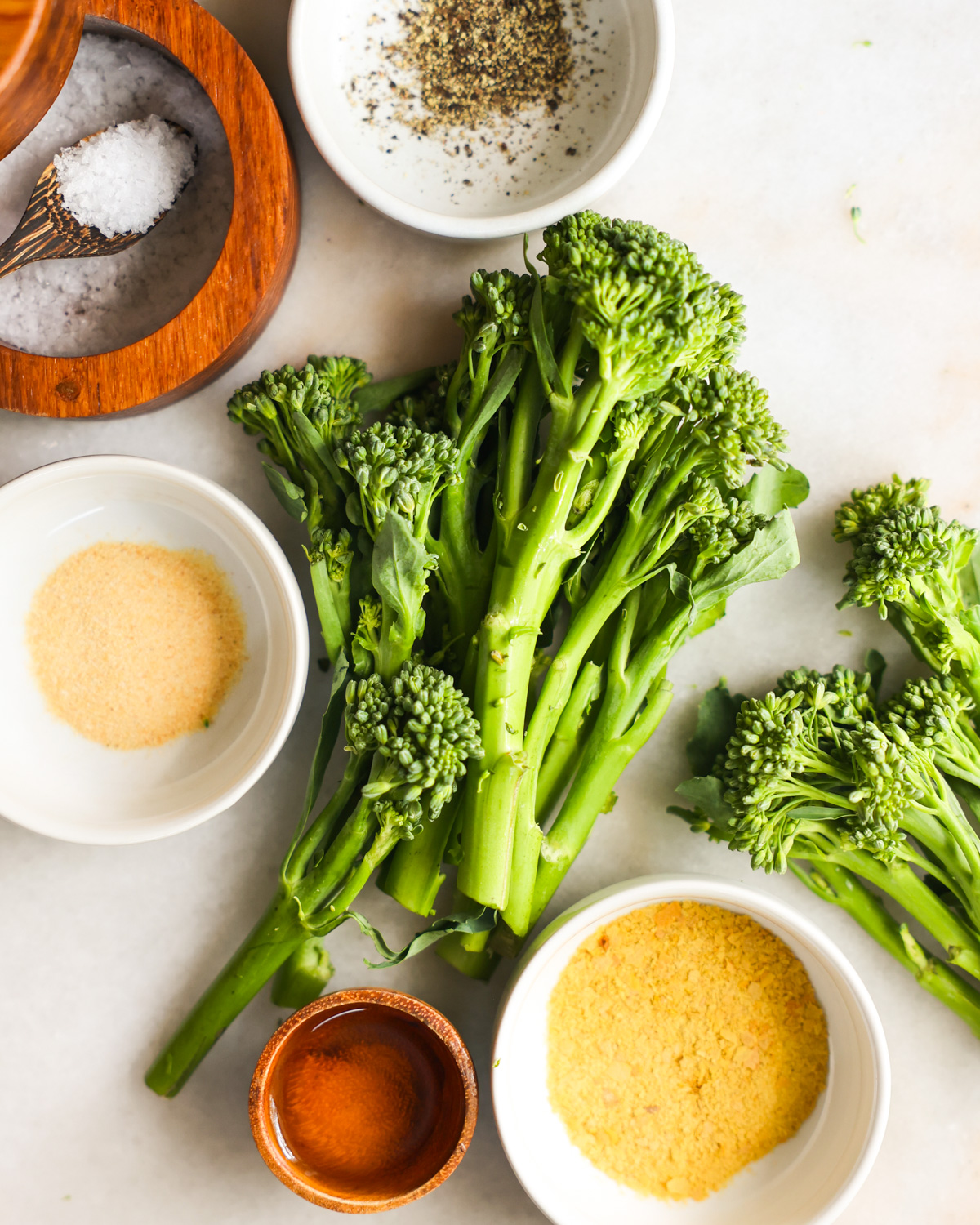
Types of Fiber
There are two main fiber categories both with their own unique attributes, soluble fiber and insoluble fiber. You need both soluble and insoluble fiber daily. Most fiber-rich foods have a combination of both types.
Soluble fiber
This fiber dissolves in water, forming a gel-like substance in the intestines which slows sugar absorption into the bloodstream. It helps manage insulin sensitivity and hunger cues, and bulks stool, providing regularity.
- High soluble fiber foods: Apples, avocados, bananas, berries, beans, eggplant, soaked chia seeds, cooked oats, brown rice, potatoes.
Insoluble fiber
This fiber cannot dissolve in water. It actually attracts water, supporting the movement of materials through the digestive system (like a broom) and bulking stool.
- High insoluble fiber foods: Leafy greens, cauliflower, broccoli, pumpkin seeds, whole grain pasta, almonds, lentils.
Tip to know the difference
Generally the easiest way to know if a food has more soluble or insoluble fiber is to feel how squishy or hard it is. For example, kale contains more insoluble fiber, while a banana contains more soluble fiber.

How do you stop fiber gas?
Insoluble fiber can cause gas and bloating if you aren’t drinking enough water. Drink more water as you increase your dietary fiber intake. If you notice bloating when switching to a vegan diet, a simple hack is to shift focus to “softer” soluble-fiber rich foods, while slowly increasing “harder” insoluble-fibers.
High Fiber Foods
Only plants contain fiber, and to get the most fiber from your diet, eat mostly minimally processed fruits, vegetables, whole grains, nuts, and seeds. Limit refined and highly processed foods, even if they are vegan because they are usually low in fiber, and high in refined ingredients.
It’s easy The chart below demonstrates just how easy it is to consume high amounts of fiber when you eat wholesome plant-based foods.
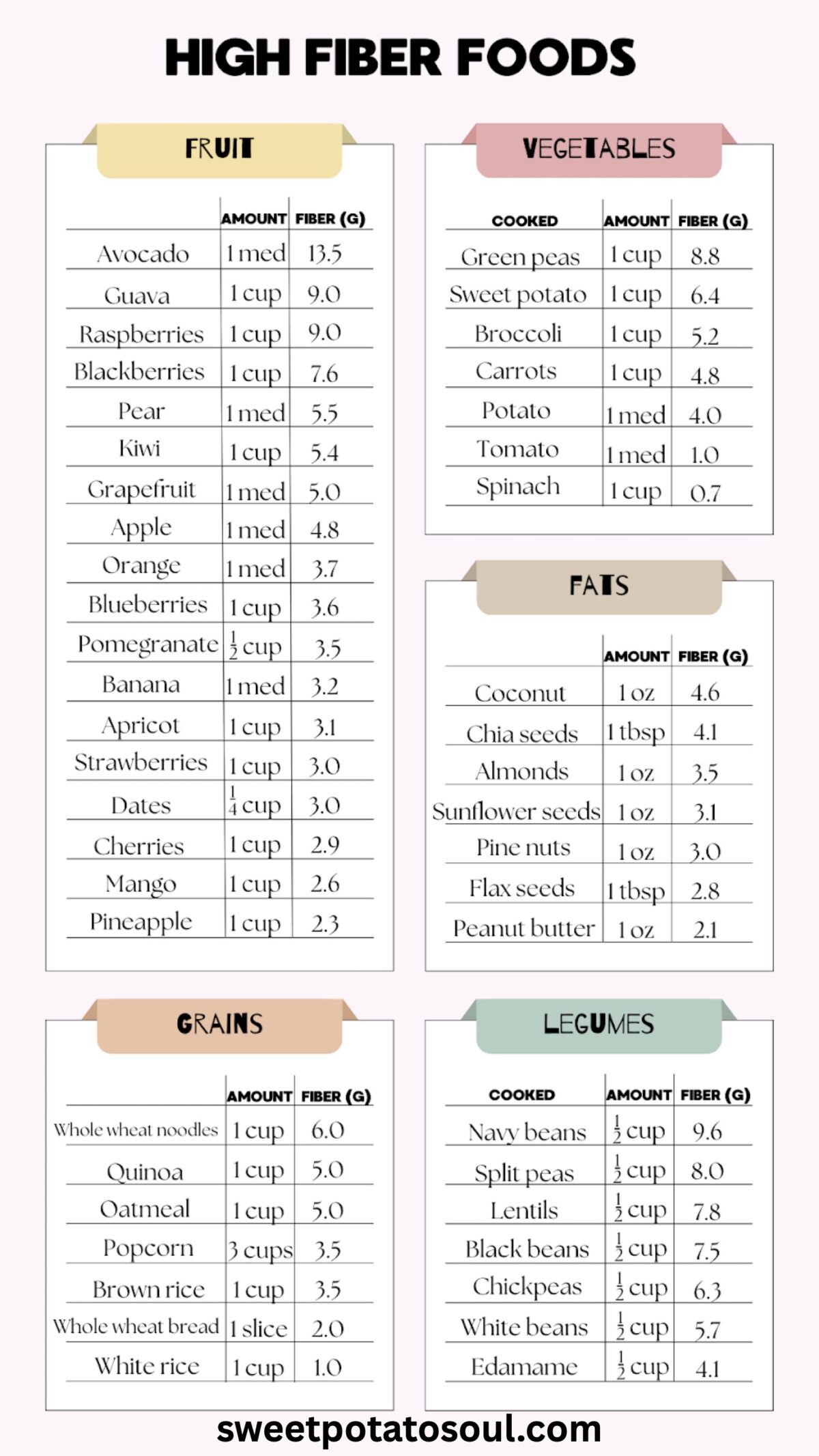
High Fiber Sample Menu
Example High-Fiber Day: 54.7g Fiber
Breakfast: 11.5g fiber
- Steet Cut Oats 1 cup cooked – 6g
- Almond butter 1 tbsp – 1.5g
- Raspberries 1/2 cup – 4g
Lunch: 15.1g
- Quinoa 1 cup – 5g
- Baked Tofu 1 cup -2.9g
- Roasted Cabbage 2 cups – 4.4g
- Tahini sauce 2 tbsp – 2.8g
Snacks: 12.8g
- Avocado ½ – 6.8g
- Ezekiel toast 1 slice – 3g
- Banana – 3g
Dinner: 15.3g
- Lentil Soup 1 cup – 8g
- Sweet Potato Wedges 1 potato – 3.8g
- Brown rice 1 cup – 3.5g
Things to remember about fiber
- White foods are stripped of their fiber to be more palatable. They should be limited in the diet and replaced with whole grain options to reap the benefits of a high-fiber diet.
- When increasing fiber, take your time to avoid bloating and discomfort.
- Increase water in tandem with increasing fiber.
- Eat a combination of both soluble (squishy) and insoluble (hard) fiber foods.
Good luck! Sweet Potato Soul is loaded with hundreds of high fiber vegan recipes to help you along your journey.

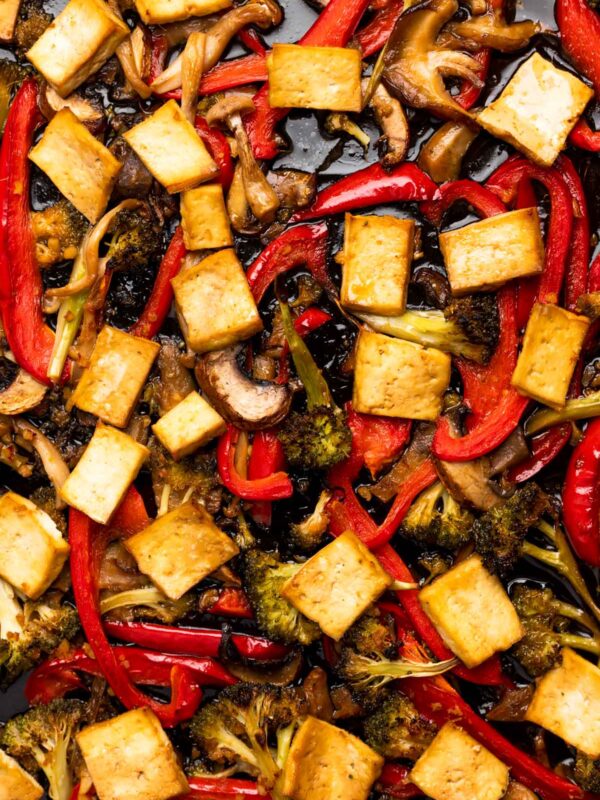
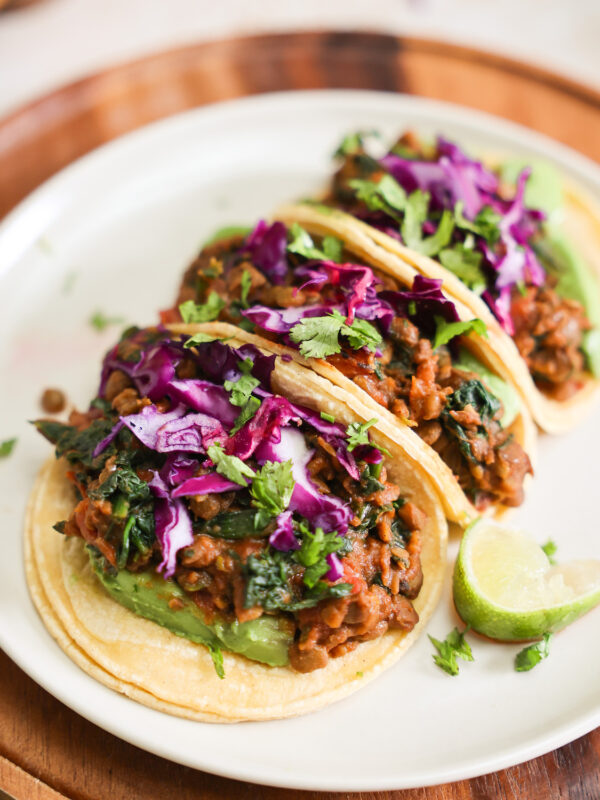







really fantastic article!! thank you so much ,Jenne
Thanks for reading, Helen!